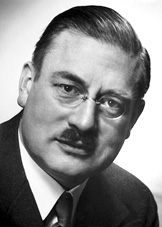Debye, Peter Joseph Wilhelm (1884–1966)

Peter Debye was a Dutch-American physical chemist best known for his work on molecular structure and dissociation in solution, and in particular for the Debye-Hückel theory of ionic solutions (1923). He was also a pioneer of X-ray crystallography. He was awarded the 1936 Nobel Prize in Chemistry for "his contributions to our knowledge of molecular structure through his investigations on dipole moments and on the diffraction of X-rays and electrons in gases".
Debye was educated in the Netherlands and Germany, and then went on to hold posts in theoretical physics at various European universities. In 1911–1916 he produced a theory of the change in specific heat capacity with temperature, a method for X-ray diffraction analysis using powdered crystals, and the idea of permanent molecular electric dipole moments. He showed how these moments could be measured and used to find the shape of simple molecules. The cgs unit of electric dipole moment is named after him. With Erich Hückel he developed a theory of electrolytes, which deals with the behavior of strong solutions of electrolytes (previous theories having dealt with only dilute solutions) by taking account of the mutual interactions of the charged ions.
In 1934 he moved to Berlin and in 1940 to the United States where he was professor of chemistry at Cornell until 1950.


